
This pathology becomes younger every year. Today, already at the age of 30-35, people suffer from it after a long day at work. Due to physical inactivity and intense computer work, pathologies arise early and actively develop.
Therefore, special physical therapy complexes have been developed to improve blood circulation in the neck with osteochondrosis of the cervical spine. Performing them daily for 10-15 minutes reduces or inhibits the likelihood of developing pathological changes.
The doctor selects the best comprehensive set of gymnastic exercises for the neck with osteochondrosis of the cervical spine. But for prevention you can use widely known ones. Today we will tell you about the 10 best.
Features of cervical osteochondrosis
It is a degenerative disease that occurs in predisposed people due to the negative influence of the environment or an inadequate lifestyle.
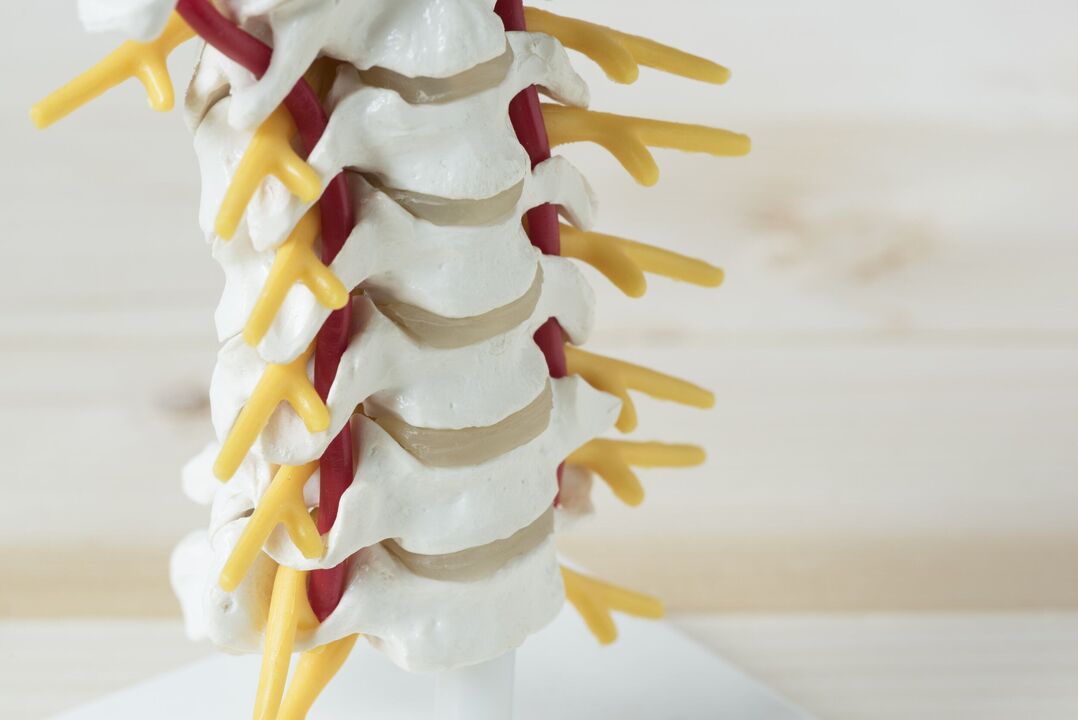
There are simple medical treatments. exercises for the muscles of the neck and back and vertebrae for pain in the neck and back of the head, against exacerbations of osteochondrosis of the cervical spine, protrusions, for exacerbations of dizziness due to pressure in the head. However, it is much more pleasant to use them only for relaxation, and not to prevent serious diseases.
The most common reasons are:
- Sedentary lifestyle, sedentary work.
- High weight, sudden weight gain.
- Incorrect and unbalanced diet that leads to a lack of vitamins and microelements.
- Injuries received.
- Congenital pathologies.
- Curvature of the spine.
- Regular hypothermia in the cervical area.
In the early stages it is almost invisible, so people do not have time to start prevention on time.Main symptoms:
- Periodic headaches.
- Sudden dizziness for no reason.
- Crunch.
- Decreased performance, distraction, inability to remember information.
- Sleep problems.
- Impaired sensation of the upper limbs.
- Depression.
- High blood pressure spikes.
- Periodic fainting.
Since the symptoms manifest themselves very weakly and variedly, it is difficult to initially determine the disease. Therefore, doctors recommend exercises to protect yourself.
Why are lessons necessary?
Is it possible to cure cervical osteochondrosis forever with gymnastics with just 10 exercises? NO. It is impossible to completely eliminate damage with the help of physical education, but physical therapy helps to stop it. And this is his main task - to save a person from troubles and pain in the future.

The neck is one of the most important parts of our body capable of withstanding constant stress. Even when we are sitting, it supports the head, supplies it with nutrients and oxygen from the blood. But with risk factors, spasms and seizures may develop, blood circulation may be impaired, nerves may become pinched, and intervertebral discs will begin to deteriorate. All this will lead to constant excruciating pain, exhausting and reducing the quality of life.
To relieve a person from discomfort, therapeutic exercises are used along with medications and massage. Physical therapy is created by specialists in such a way as to gently warm up the muscles and remove spasms.
Even the safest morning exercises to treat the neck and shoulders from pain and dizziness, pain in the cervical vertebrae during exacerbations of osteochondrosis of the cervical spine should not be used at home.
Rules for performing the exercises
Physical exercises for the treatment of osteochondrosis of the cervical spine and cervical vertebrae have been used for many years.
Follow a set of rules:
- First, go to a doctor.
- To sleep, choose a flat, hard and non-slip surface.
- Measure your pace before, during and after training. Ensure readings do not exceed 129 beats per minute, reduce load if necessary. Measurements can be taken using a fitness bracelet or by counting your pulse using a stopwatch.
- Everything should be done smoothly, slowly. The speed of execution and the range of movements gradually increase.
- To obtain results it is important to maintain regularity at least 5 times a week.
- An incorrect sequence or an excessive load can cause personal injury. Therefore it is best that the course of physical therapy is prepared by the attending physician.
Exercises for the cervical-collar area for osteochondrosis are exercises accessible to everyone. But it requires compliance with precautionary rules.
TOP 10 exercises for cervical osteochondrosis
Exercises for cervical chondrosis are therapeutic exercises and exercises for every day, but the neck complex is not performed during a flare-up, and what physical exercises to do should be decided by the doctor.
They are aimed at:
- Strengthen the spine and the muscles of the shoulders, arms, back and chest.
- Prevent spasms and eliminate existing ones.
- Improves mobility and coordination.
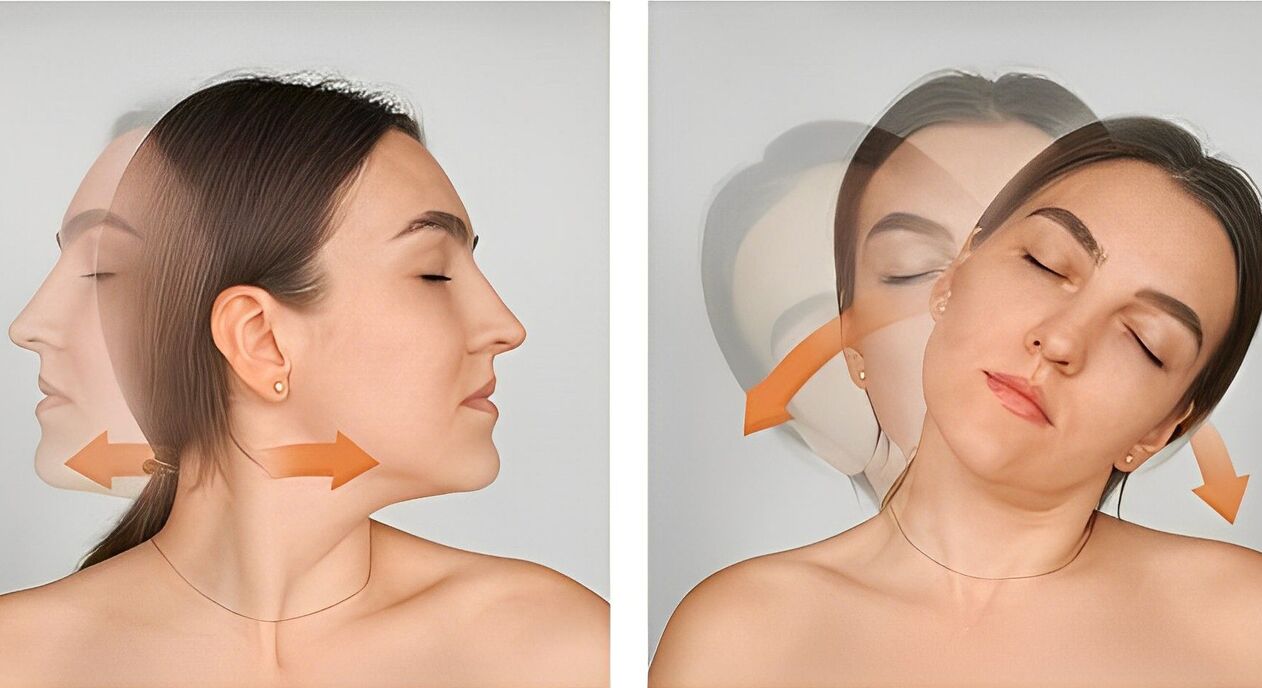
An important condition for the success of physical therapy is the preliminary warm-up part. Without this procedure there is a risk of injury. It is enough to rotate your shoulders several times, gently turn your head to the side and raise your arms. When the necessary muscles are warmed up, you can start performing the main complex.
10 lessons showing how to lengthen the neck with cervical osteochondrosis, strengthen the cervical spine and maintain the health of the vertebrae:
- Relaxes tired muscles.Standing, hands free. Squeeze your palms into fists and tense all the muscles in your arms. At the same time, lower your shoulders, straighten your back and freeze tension. Hold the position for 30 seconds, then open your palms and relax. After 30 seconds, repeat the straight pose.
- From any body position that is comfortable for you.Looks ahead. Then slowly tilt your head to the left. Try touching your shoulder to your ear without moving your hand or lifting it towards it. Perform the movement smoothly, feeling the muscles lengthen. Freeze with your head bowed for 10-15 seconds, then straighten up and repeat the movement to the right. As you move, focus on the sensations.
- Pendulum or turns of the lowered head.Get into a position that is comfortable for you. Lower your head forward so that your chin touches the hollow next to the jugular vein. Pause for a second, feeling the stretch in your back muscles. Then, without lifting your chin from the skin, start moving to the right, reach the shoulder area and freeze. Return to the original position, then repeat in the opposite direction. Do 7-10 repetitions in different directions.
- Shoulder lift.Warming up the shoulder girdle plays an important role. Maintain a relaxed state. Then simultaneously raise both shoulders as much as possible, trying not to move them. Then relax by lowering your shoulders and moving them back slightly. Repeat 5-10 times. Observe your breathing as you do this.
- Movement in opposite directions.Initial complete relaxation of the shoulders. Then we both strain a little at the same time and move them forward. Then we take it again, straightening ourselves, trying to bring the shoulder blades together. Freeze a little at the points of abduction. Do this repeatedly.
- It tilts.Straighten your back, straighten your shoulders. Gently tilt your head down. But you can't move your shoulders forward. Freeze for a moment, pick it up. Perform 5-10 times, always trying to lower your head lower. There should be no pain.
- Back and upper limbs.It can be performed in a sitting or standing position. Straighten and spread your arms, lower and relax your shoulders. Then tense your back and squeeze your shoulder blades together. Relax by moving your arms slightly forward. Do this 5-7 times, pay attention to the fact that the upper limbs themselves do not move, all movements are performed by the efforts of the spinal muscles.
- Brush rotation.Extend your arms as before, lower your shoulders. Bend your elbows up and clench your palms into fists. Keeping the bend of the elbow perpendicular to the floor, rotate the fists in the hands 4 times clockwise and counterclockwise. The main task at this time is the constant position of the hand.
- Rotation.We remain in the position we were in before. Relax your upper limbs up to the elbow, then perform several rotational movements with your elbows, first in one direction and then in the other. Place your hands at your sides. Perform 5-7 sets - repetitions.
- Shoulder rotation.Spread your upper limbs, relax your shoulders. Then perform 4-5 rotations forward and then backward in the shoulder joint. Relax, do it a few more times.
Therapeutic gymnastics for the shoulders and neck is included in the complete complex of treatments for dizziness, against headaches for men, women and the elderly, this is the best and effective static warming for vertebrae with osteochondrosis of the cervical spine at home , which a professional trainer shows you how to do, but in case of a flare-up it is better to abstain.
Various lesson systems
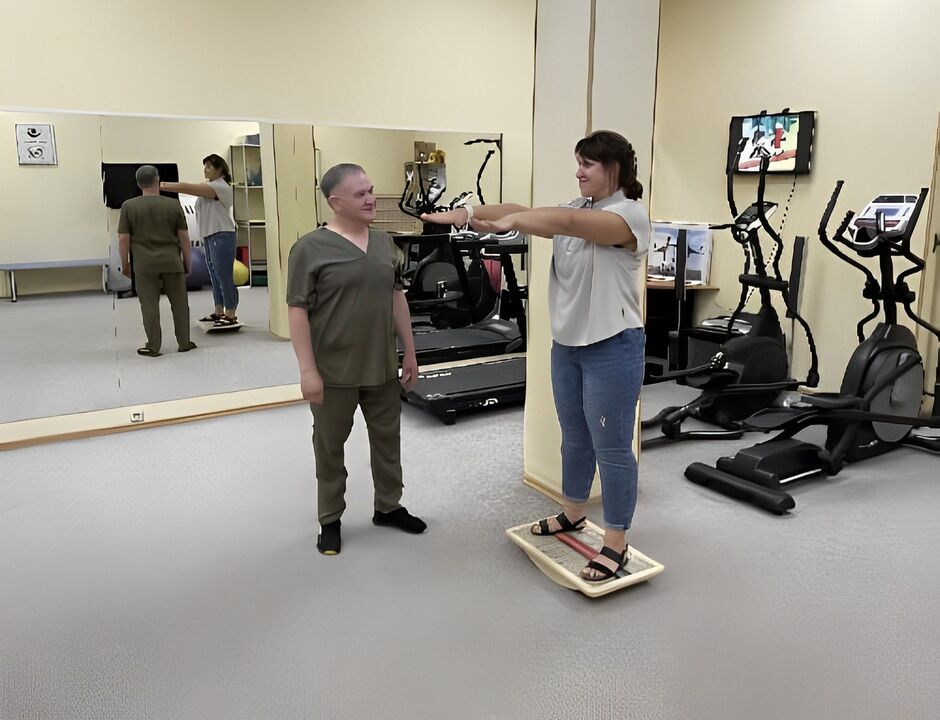
Many specialists, knowing the prevalence of the problem, have developed their own series of physical exercises and gymnastics for women and men to strengthen the muscles of the shoulders and neck with osteochondrosis of the cervical spine, which should be done with headaches in the back of the head and to improve blood circulation in the brain, considering them the best and most effective to practice at home. The effectiveness of physical therapy has been proven when performed correctly and regularly.
Static exercises
It is practically not necessary to travel. They can be done at the desk in the office:
- Place your palms on your forehead.Tensing the muscle layer, try to put pressure on the palms of your hands to move them and lean forward. At the same time, you have to stretch out your arms and resist. You need to spend 20-30 seconds in a tense state, then completely relax and repeat again after 10-20 seconds.
- Place your hands on the back of your head, first clasping them together.Try to throw your head back with force and at this moment resist the movement with your hands. Spend 15-30 seconds under tension. Repeat 4-5 times.
- Place your hands on it without releasing the lock.Now you need to press directly on the top of your head and actively resist the pressure, trying to give the impression of lifting your head. The duration is the same as previous lessons.
- Move your hands into a lock at the base of your skulland press, actively resist the pressure, trying to tilt your head back.
Each is repeated 3-4 times. It is important to monitor your sensations.
Dikul's exercises
The complex is known to be perfect for people with advanced osteochondrosis. Anyone can do it at home.
Smooth movement is important.
- Place your right hand on your left ear.At the same time, raise the left one, bending your elbow slightly at shoulder level. Using your main hand, gently tilt your head by pressing in the auricle area. Correction for 7-10 s. in this position. Then do the opposite.
- Raise your arms and clasp your palms.Gently place them on the back of your head and apply light pressure, tilting your head. At the same time, arch your back. Freeze in this position for a few seconds, then slowly straighten up.
- Rest your elbow on the table and rest it comfortably.Place your palms around your lower jaw. Tense your neck and try to gently move your head in different directions in this position.
- With your palms together, press on the occipital area.Overcoming resistance with the help of the efforts of the neck muscles, try to throw your head back
Exercises according to Bubnovsky

They can also be used in case of hypertension and headaches. Pain may occur. The doctor who developed the complex recommends continuing to perform it if the pain is moderate.
The most effective:
- Lower your head to your chest and relax.Then tighten the neck muscle area and extend the end of your head in front of you. At each extreme point of the movement, stop briefly.
- In the same positionExtend your lower jaw in turn towards your armpits.
- Return to first position.Change the position of the end of your head to the right, then tilt it back and look at the ceiling. Slowly return to the starting position and repeat the movement.
- Bring your hands together from above and look at them from bottom to top.Spread your arms to the sides, move your neck and look alternately at your left and right hands.
- Extend your arms straight up and the surfaces of your palms outward.Make sure that your chin is strictly parallel to the floor and moves slightly forward.
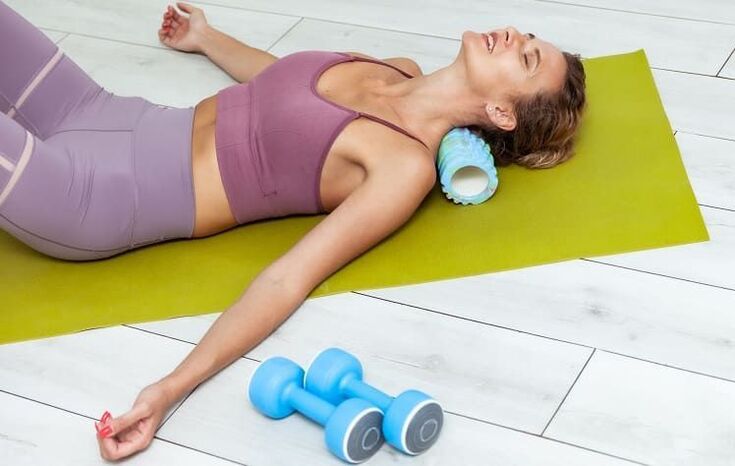
The doctor also developed useful strength exercises.You can do them yourself:
- Do push-ups on chairs.Place your palms on your arms outstretched on the seats of two chairs. We leave our feet on the floor or raise them to a level just below the chairs, for example, put them on the seat of a sofa. We perform push-ups smoothly and slowly. Sudden movements should be avoided.
- In a lying position, hold the dumbbells in your hands.Inhaling, lift them up, exhale, slowly lower them from the end of the head.
- Without changing the location and equipment, we continue to do so.Exhaling, we return to the position in front of us and as we exhale we move away so that our palms do not touch the floor.
When you first start training, perform the movements 3-5 times if you have no such experience. Gradually increase the repetitions and bring it up to fifteen for each.
Contraindications

Your doctor will tell you what exercises you cannot do with cervical osteochondrosis at home and what you can and should do. The complex and load, the number of approaches are selected individually. There are numerous contraindications for carrying out physical therapy complexes. The main one is the acute phase. During this period, excess physical activity only fuels the degenerative disease. It is possible to start classes only after the permission of the coach and under the supervision of him for the first time. Other contraindications are divided into temporary and absolute.
It is worth refraining from training for a while:
- If complications are identified.
- In the presence of other chronic diseases that have become acute.
- Infectious infection of the body by any type of parasite: viruses, fungi, bacteria.
- Period of exacerbation of osteochondrosis, completion of a course of treatment.
- Inflammation in the neck area.
- Damage to the neck muscles or skin, abrasions, cuts, bruises, consequences of blows and falls.
- Attacks of exacerbation of pathologies of the cardiovascular system.
- Fever, viral diseases leading to increased temperature.
- Chronic or temporary tiredness.
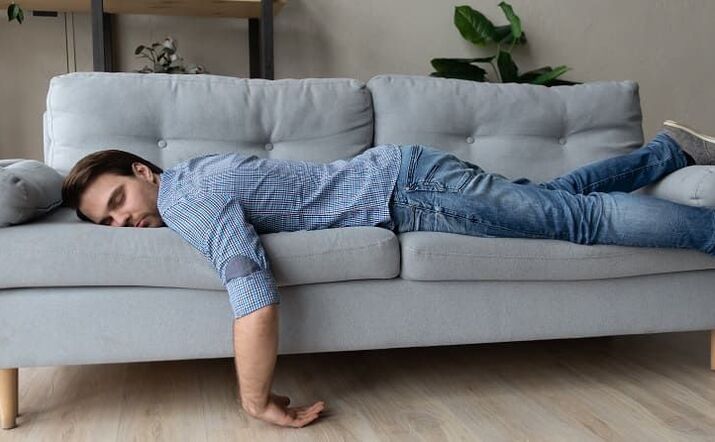
The exercise sets should not be used in patients who have:
- A foreign body of any origin located near large vessels.
- Embolism detected, presence of blood clots.
- The presence of bleeding of any intensity.
- Severe diseases of the heart and blood vessels, especially during exacerbation.
- Stage 2-3 atrioventricular block.
- Cancer. Malignant tumor.
- Significant worsening of the ECG.
A full range of physical therapy exercises for the neck and shoulders for pain caused by osteochondrosis of the cervical spine will be chosen differently for everyone; which movements to perform during gymnastics and daily exercises should be decided by the attending physician. Only with individual selection of the program can its effectiveness and safety be guaranteed.
How to increase the effectiveness of lessons
In the period between exacerbations, in order not to take additional medications and avoid the development of the disease, it is important to achieve results from gymnastics for cervical osteochondrosis.
To increase efficiency, you need to follow several rules:
- Perform the exercises at least 5 times a week.Ideally, the load is needed every day to achieve consistently high results.
- Performing the complex 2 times a day is necessary for people leading a sedentary lifestyle., spending a lot of time at the computer or in a static position where the neck is tense. These people are at risk and therefore greater attention must be paid to prevention.
- Training does not stop after the symptoms of the disease disappear.Without regularly maintaining a level of physical activity, osteochondrosis attacks will quickly return.
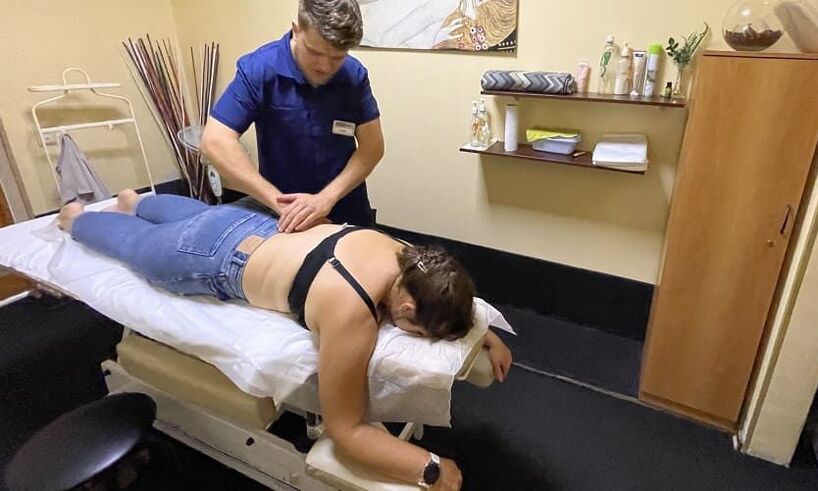
It is also possible to increase the effectiveness of disease resistance by adding some useful lifestyle changes to the set of exercises:
- Nutrition.Following a special diet can significantly slow the development of osteochondrosis. In your daily diet, you should significantly reduce the amount of salt, spices, vinegar, fermented milk products and curd with additives and artificial colors, and soda. Reduce the level of alcohol consumption and give up cigarettes, as the substances contained in alcohol or released during smoking have an extremely negative effect on bone strength.
- Cold and hot shower– a tool that allows you to easily improve blood circulation and nutrition of certain areas with nutrients. For maximum effectiveness, it should be taken daily at the end of water procedures. The temperature must be changed within 1 minute (10-15 seconds alternately for hot and cold water). To achieve the best effect, the water jet should be directed directly onto the neck and shoulders.
- Massage– a good remedy that helps relieve fatigue and prevent muscle spasms. It is recommended to undergo a course of professional massage of the neck, neck area and shoulders once every six months. Also do self-massage regularly to relieve fatigue.
Therapeutic exercises for cervicobrachial osteochondrosis are one of the most important measures to maintain health and prevent exacerbations and further development of the disease. Therefore, you should be prepared for the fact that morning physical therapy will always accompany you.
Exercises for prevention
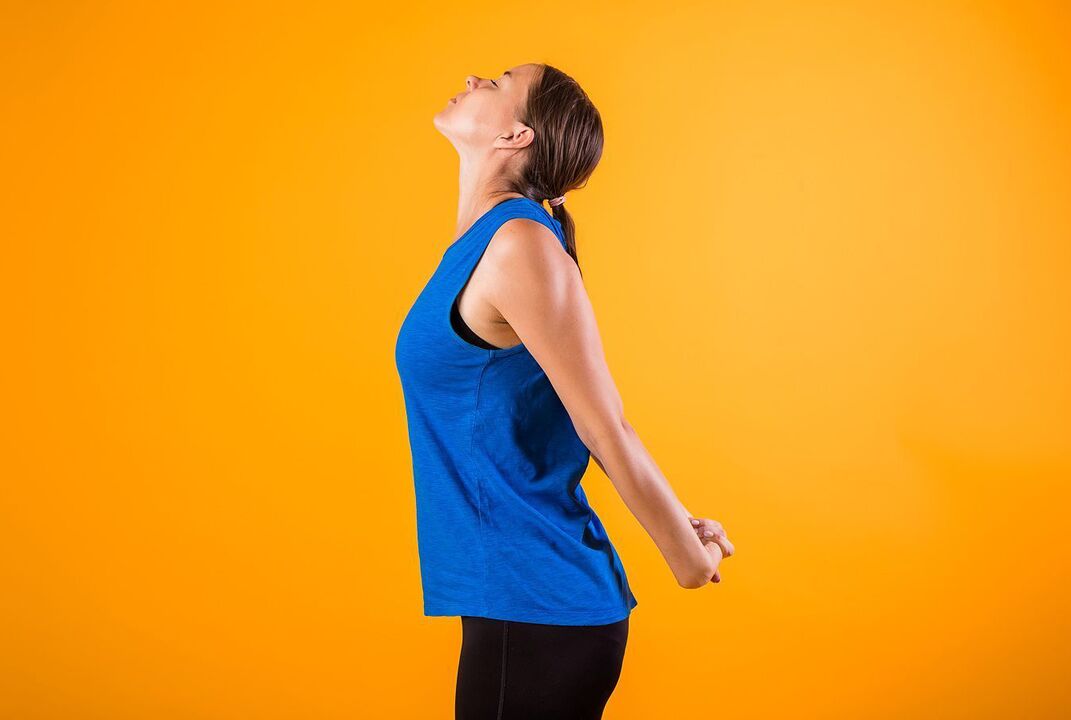
Strengthening the neck muscles and stretching for osteochondrosis of the cervical spine are the main tasks. By practicing regularly, you can forget for a long time about excruciating pain and attacks that require treatment with medications. That is why most people who have already encountered this disease or are trying to avoid it prefer to regularly engage in prevention, protecting the intervertebral discs from unnecessary stress.
As preventative exercises, you can perform any set of exercises you like. It is worth performing each of the movements 15-20 times during the day.
Another effective way to avoid problems with any part of the back is regular sports training. The most beneficial sports for the back are swimming, water fitness, handball and other activities that involve effort in water.
During preventive exercises, an important factor for success is the correct load. To keep your back healthy, consider your age and physical characteristics and avoid overexerting yourself.
























